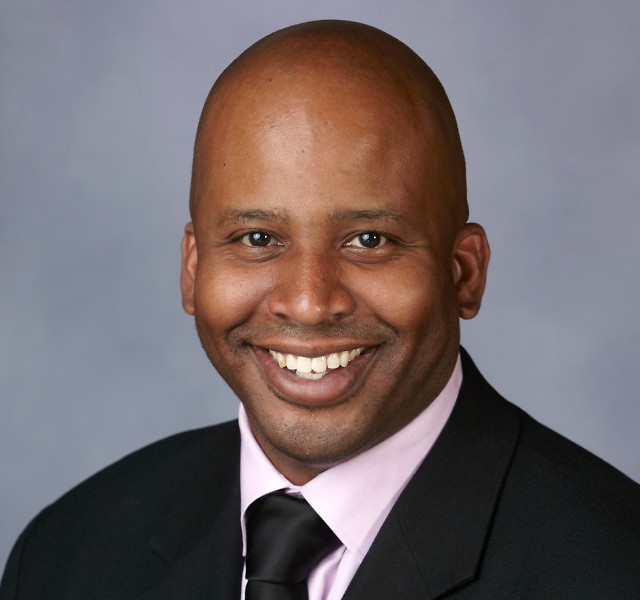Todd Robinson is the author of the book, "A City Within a City: The Black Freedom Struggle in Grand Rapids, Michigan." Robinson is a specialist in African-American history, and his book provides an account of the African-American history of Grand Rapids. Through his work, he helps readers understand past and current conditions surrounding racial inequity in Grand Rapids. Robinson, is originally from Springfield, Mass. -- a town with very similar demographics to those of Grand Rapids, and is a University of Michigan alumnus who was introduced to Grand Rapids during his time as a graduate student where he focused on African-American history and urban communities in the early 2000s. After several trips to the city and eventually moving here, Robinson became strongly attached to the Black community and was inspired to tell the its narrative.
In a recent interview, I spoke with Robinson about various topics surrounding Grand Rapids’ untold history. We discussed what led him to his research in Grand Rapids and his opinions about the current pressing issues in the city. Robinson's interest in African-American history was sparked at a young age, when he was singled out in his seventh grade honors class and asked by his teacher questions about slavery as if he had all the answers because of his ethnicity. Robinson was thrown off by this question, but took it upon himself to look deeper into his history because Black history is more than slavery.
During his graduate years, Robinson began to take multiple visits to Grand Rapids, and decided to move there for a short period of time. He searched high and low to learn about Grand Rapids during the Post-World War II era. His journey was not easy because Grand Rapids was considered a secondary city. Historical archives tend to have abundant information about more prominent urban areas like Detroit and Chicago during the Civil Rights Movement, but smaller ones tend to be overlooked. Robinson was determined to prove that Grand Rapids' Black freedom movement mattered. As he wrote about Grand Rapids, he found that he saw himself, his home town and experiences in an integrated school system.
I asked Robinson how he went about gathering his findings about Grand Rapids. From digging through obituaries and written and verbal information, he used various methods in compiling his research. He traveled to Chicago, Detroit, Ann Arbor and Chicago to view archives, finding parts of Grand Rapids' history. When I asked Robinson about his observation of the Grand Rapids Black community over the years, he spoke highly. He was encouraged by the support of the Black community and in turn, they felt he captured the essence of the Grand Rapids story. There were great measures necessary to overcome some of the extreme adversities that the black community in GR has faced, and when looking closely, you realize that they had to fight for everything they have, and still are fighting to make more progress today. Before and during the Post-WWII era, the Black community was suffering from Northern segregation norms like restrictions in housing, education and employment. The Black community did not accept these circumstance, and instead they rose up against oppression and came together to push toward equality.
Robinson shared how important it is for students like us at Grand Valley State University to continue to join together and speak out against injustice. Like many other movements, the youth were the driving force in the Black freedom struggle, with members of the Grand Rapids community acting within vital roles in the fight for equality in Grand Rapids. Whether an individual is conscious or unconscious of the issues at hand, it is important for the youth to use their strength and voice to demand equality - by conventional or unconventional measures. Robinson continued to speak on the importance of the Black youth in Grand Rapids during this era. The older adults were more passive and complacent about the issues they were facing, but the youth took a more outspoken role in the larger process. Some community members neglected to demand the equality they deserved and some were looking at the problem through an individualistic lens. He noted that organizations like NAACP and the Urban League, along with white allies helped people fight racial inequalities, hold the Black community responsible and bring the community together.
"A City Within a City" acknowledges the great efforts that the African-American community took in Grand Rapids. This book also addresses the idea that we are not living in a post racial society. There are still changes to be made in Grand Rapids and in our country’s structure to improve negative conditions and injustice that the African-American community faces today. These are real, pressing issues that must be heard, and knowing the history of Grand Rapids is intergral to solving them.
The Rapidian, a program of the 501(c)3 nonprofit Community Media Center, relies on the community’s support to help cover the cost of training reporters and publishing content.
We need your help.
If each of our readers and content creators who values this community platform help support its creation and maintenance, The Rapidian can continue to educate and facilitate a conversation around issues for years to come.
Please support The Rapidian and make a contribution today.

